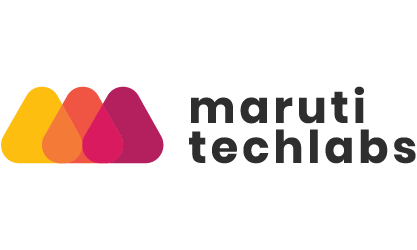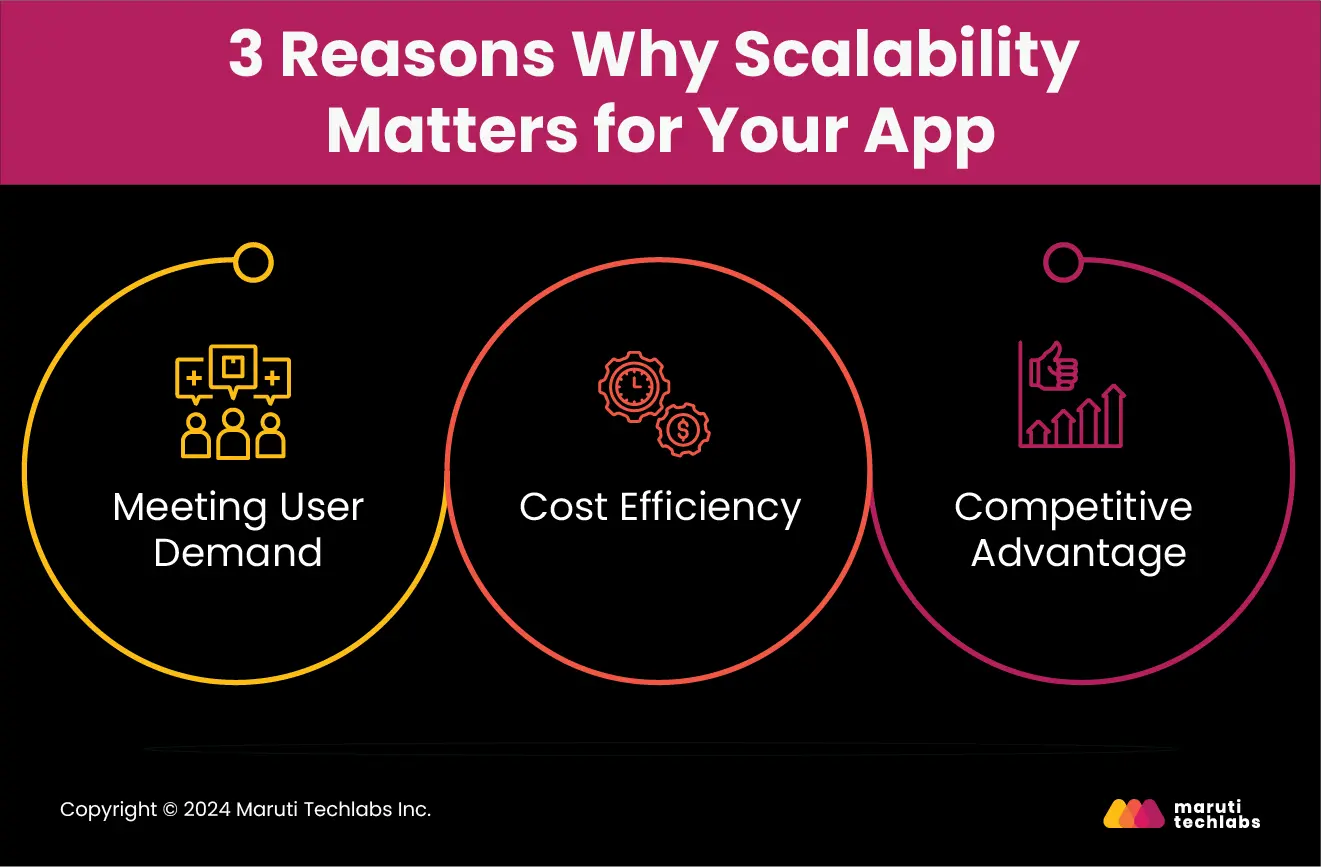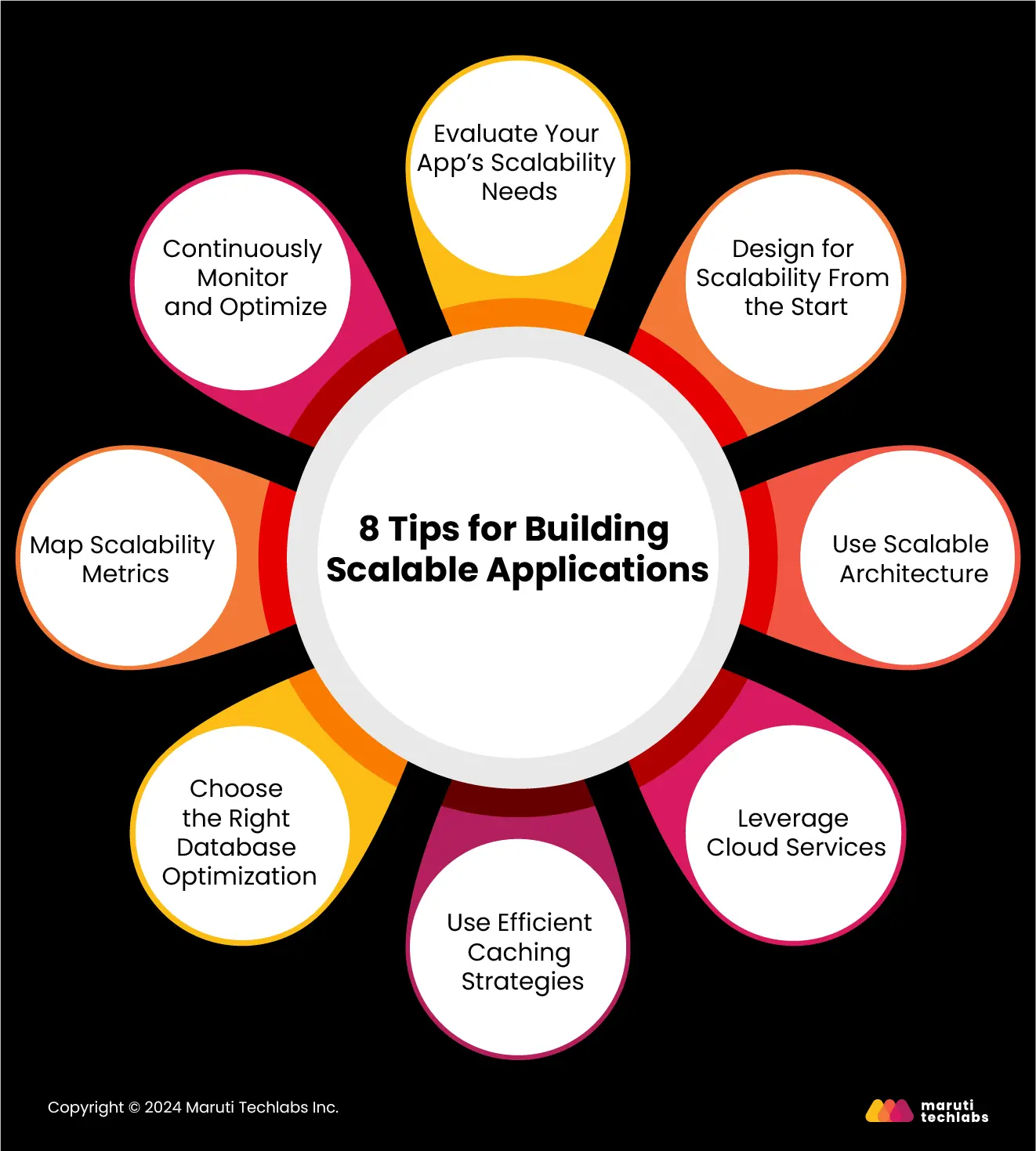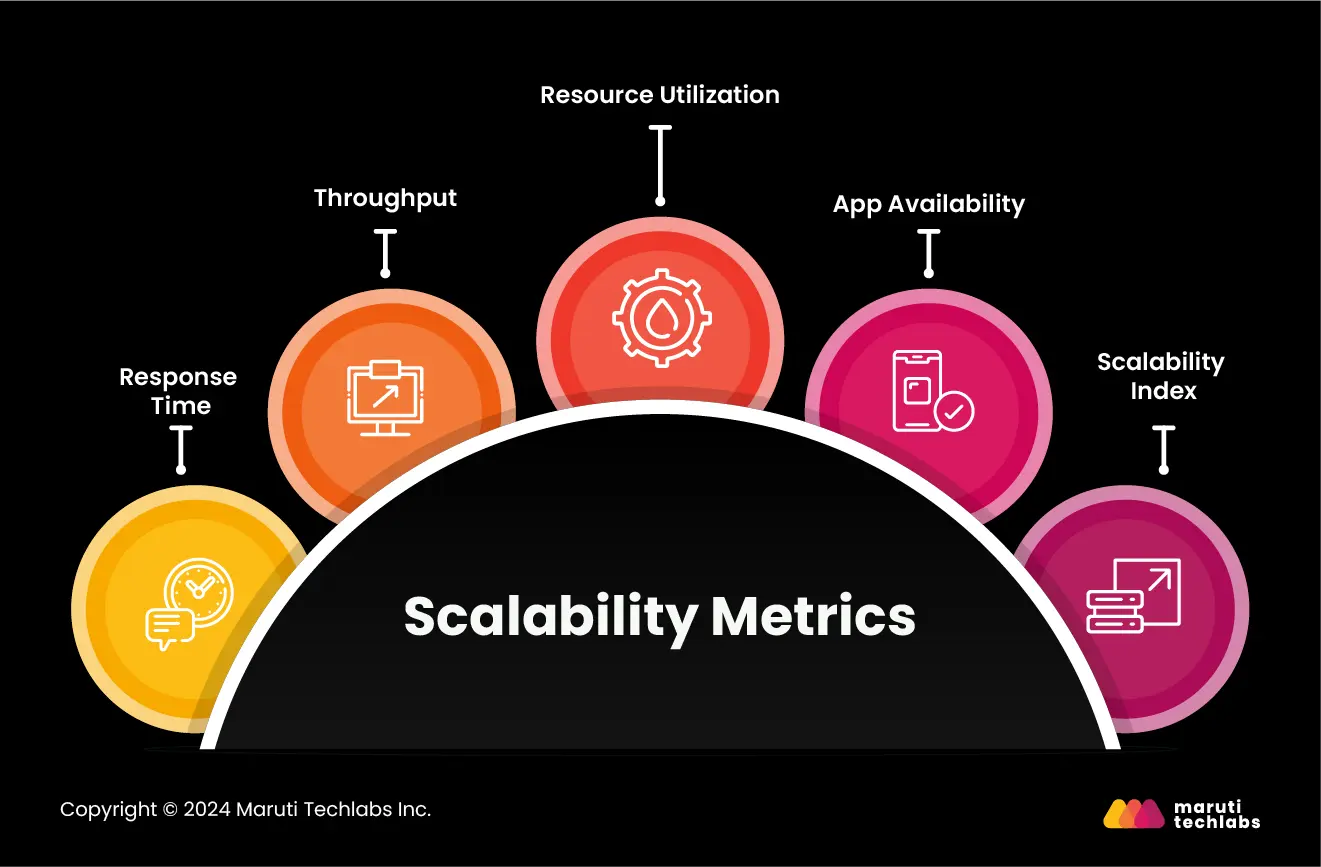Future-Proof Your App: Scalability Considerations for Long-Term Success
 Maruti Techlab
Maruti Techlab
Introduction
Whether you plan to launch a new app or envision exponential growth in your existing app, you must know ‘scaling apps’!
Imagine your product becoming the next big thing, like Candy Crush Saga, Pokemon Go, Instagram, or Snapchat, with millions of downloads every minute.
How smoothly will your app handle this increased load? Will it be a seamless journey like Netflix’s, or are you up for a frustrating user journey with poor performance or app unreliability?
Scalability is the key to sustainable business growth. It's not merely a topic for future deliberations when success knocks—it's the bedrock that determines your application's destiny.
Candy Crush Saga experienced a 12-fold increase in revenue in just a year. But what’s more impressive is that they accommodated this growth with only a six-fold cost increase, sketching a nearly 70-fold increase in operating income.
This is the power scalability holds!
This blog covers everything from the minute details of scaling apps to challenges you can anticipate while scaling your app.
What Is Application Scalability?
Scalability is the flexibility of an application.
It is essential to adapt to varying demand levels. Your application must deliver top-class performance consistently regardless of the number of users without compromising speed, functionality, or reliability.
Scaling apps can be of two types – horizontal scalability and vertical scalability.
Vertical Scaling vs Horizontal Scaling
Horizontal Scalability: Adding new resources to your system.
Vertical Scalability: Upgrading your existing resources with more power.
Tech giants like Google, Facebook, Amazon, and Zoom employ horizontal scaling. While horizontal scaling is expensive, complex, and requires maintenance, it ensures less downtime and better flexibility. ERP software like SAP ERP or Microsoft Dynamics can benefit from vertical scaling.
Scalability Metrics
Scalability metrics are performance metrics used to measure your application's scalability. Standard metrics include response time, throughput, resource utilization, and error rate.
Let us discuss these metrics in brief:
Response Time: The amount of time your app takes to handle a request and respond.
Throughput: The rate at which your app can process requests.
Resource Utilization: Utilization of resources like CPU, memory, and network.
App Availability: Percentage of time when your application is operational and accessible.
Scalability Index: The ratio of change in performance to the change in load.
Why Does Scalability Matter?
If you want millions of happy users, scaling the app is your key!
Unfortunately, several businesses were blindsided by last-minute scalability issues.
Pokémon GO experienced the heat of poor scalability when it became an overnight sensation. The game's servers could not handle overload, which led to frequent crashes and downtime. Similarly, Twitter crashed when millions of users started conversing on the app!
Thankfully, some apps wrote their success stories on scalability.
The best example of a scalable app is Zoom. Zoom's user base skyrocketed from 10 million to 200 million during the lockdown. Offices were migrating to virtual meeting rooms, and Zoom seamlessly facilitated this with disruption-free services.
Zoom’s ability to scale quickly took it from $623 million to $4.10 billion in just two years.
Here are three reasons why scalability matters for your app:

1. Meeting User Demand
Scalability enables you to build and integrate new and exciting features into your app. It makes your app react quickly, adapt to changing user requirements, and attract more users without compromising performance. Check out Netflix. The application easily accommodates its growing user base, releases new features frequently, and delivers a flawless user experience.
2. Cost Efficiency
Scalability means accommodating growth without increasing your infrastructural resources. Auto-scaling empowers applications to scale up when the load increases, and resources can be scaled back down once the traffic subsides without a substantial change in cost. The Black Friday Rush is an excellent example of how autoscaling helps e-commerce sites.
3. Competitive Advantage
Scalable apps enable organizations of all sizes to quickly adapt to changing market dynamics. Whether you're a start-up or a legacy enterprise, scalability allows you to meet evolving customer needs, thereby gaining customer loyalty and trust.
Now that you know why scaling apps is so important, let’s understand how to build scalable apps.
How Do You Build Scalable Applications?
Any application, no matter how big or small, must be designed and developed with scalability in mind.
Here are 8 tips for building scalable applications:

1. Evaluate Your App’s Scalability Needs
Not all apps are meant to scale.
Although it is recommended to factor in scalability while designing an application, one needs to know that not every application requires the feature.
For instance, the use of a calendar, calculator, or notes on the phone does not require a firm scalability plan.
Therefore, the first and the most crucial is to determine whether your application requires scalability at all.
Some areas to consider include expected user growth, occasions of peak usage, and downtimes. Understanding your requirements better will enable you to make informed decisions.
2. Design for Scalability From the Start
Scalability isn't an afterthought!
You do not bring it to the table when the traffic explodes and your application goes gaga. That would mean colossal downtime and lots of disappointed users!
During your application's very early planning phases, you must be clear about its scalability requirements. You will choose your architecture, infrastructure, and tech stack depending on these requirements.
3. Use Scalable Architecture
A scalable architecture forms the foundation of scaling apps.
For example, choosing an architecture supporting loose coupling lets you quickly amend or launch new features. Modularity in your architecture isolates different components, permitting you to scale each component independently.
Proven architectural patterns like microservices, containerization, serverless computing, or event-driven architecture can facilitate seamless app scaling. A survey by Camunda revealed that about 63% of organizations adopt a microservices architecture.
The microservices architecture creates a decentralized environment, enabling development teams to independently isolate, rebuild, reimplement, and manage services.
4. Leverage Cloud Services
Scaling your application has become easier than ever with cloud computing!
Netflix initiated the concept of scalability with the help of the AWS cloud platform strategy. Using AWS, you have unlimited access to resources; applications can increase or decrease their resources where necessary.
For example, if there is a higher demand for application usage, AWS can auto-scaling the resources needed to accommodate the demand. This dynamic scalability ensures flawless app performance even at peak traffic.
5. Use Efficient Caching Strategies
Caching improves your app's speed and user experience.
Caching is a technique that enables users to access information quickly. It removes the burden from your servers by placing relevant information into memory, resulting in reduced latency and improved speed and performance.
Cache servers such as Redis or Memcached keep frequently accessed data in memory. There are several caching types, including page, object, and database. One can choose an appropriate caching strategy based on the app's scalability needs.
6. Choose the Right Database Optimization
Database scalability is the heartbeat of an application.
But what does it mean for the databases to be scalable?
Scalable databases refer to systems that can efficiently handle increased data volume, user traffic, and processing demands by expanding resources or distributing workload across multiple servers without sacrificing performance or reliability.
Database scalability refers to the ability of an application’s database to expand in a controlled manner so that it can successfully handle a greater number of users and or transactions. Normalization, indexing, partitioning, and caching are some strategies that can be used to enhance database operations.
7. Map Scalability Metrics
Scalability metrics are indicators that help you assess the effectiveness of your application.

Key metrics include response time, throughputs, resource usage, fault tolerance, and horizontal and vertical scalabilities. Using these metrics, you determine the performance baseline and the areas that may require improvement once the application has grown.
By adopting this proactive strategy, you can uphold peak performance, avoid congestion, and manage expenses efficiently, improving user satisfaction and facilitating your application's expansion.
8. Continuously Monitor and Optimize
Achieving peak performance is more than establishing a robust IT infrastructure. It needs ongoing attention, continuous scalability testing, and management.
You can rely on advanced tracking tools like AppDynamics, Scout, or Dynatrace to monitor scalability effectively. These apps help you track critical metrics like CPU, memory usage, and network bandwidth.
Subscribe to my newsletter
Read articles from Maruti Techlab directly inside your inbox. Subscribe to the newsletter, and don't miss out.
Written by

Maruti Techlab
Maruti Techlab
Maruti Techlabs is an award-winning product strategy, design, and development partner. We bring the strategic value of product development consultants, the technical expertise of product engineers, data and systems architects combined with the UX-first approach to early-stage startups and established ventures. With a rich & varied experience of 13+ years in software development & a global clientele, we do everything from materializing your ideas through rapid application development & improving processes via RPA and AI to streamlining customer support via chatbots. We believe that the best business comes from long-term relationships, and it’s why we strive to build long-term partnerships with our customers. Our team of highly skilled & experienced developers, designers, and engineers understand the market's pulse & specific business needs to provide custom product development solutions. Service Offerings: Product Development Rapid Prototyping Low Code/No Code Development MVP Development Data Engineering Computer Vision Machine Learning Natural Language Processing DevOps Cloud Application Chatbot Development Robotic Process Automation Business Intelligence Data Analytics Quality Engineering Awards & Recognition: Great Place to Work Top B2B IT Company - By Clutch Best Company to Work With - By GoodFirms India’s Growth Champion - Statista & Economic Times Most Reviewed AI Partners - By The Manifest We provide a people-centric work environment that enables our employees to: Enhance their professional & personal growth Use the latest technologies to make a positive impact Experience collaborative innovation with a focus on diversity & work-life balance Discover global opportunities to work & learn with industry leaders Our mission is to help our clients build future-proof and intuitive digital products while guiding them with the best processes & practices that help them undergo a successful digital transformation and scale sustainably.